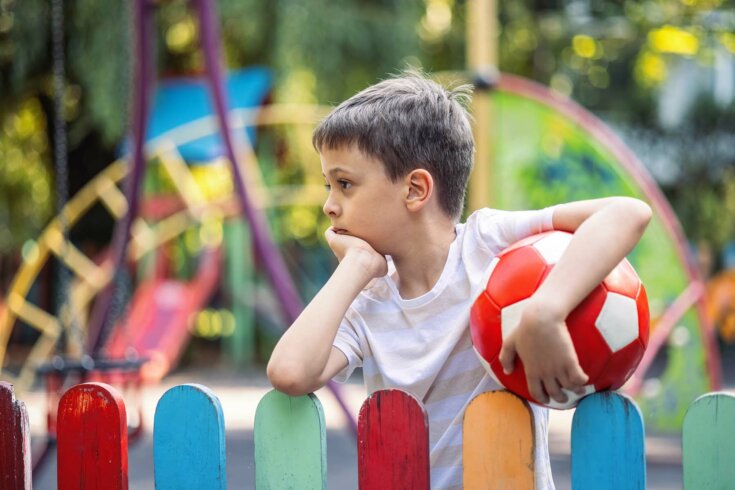The last day of school is arguably the highlight of the year for kids. It’s also an ebullient milestone that fills parents with potent nostalgia and hazy longing for the summers of their own youth. Like a desert mirage, the next school year shimmers on the horizon of a hot, seemingly endless expanse of time.
But what if school didn’t end for the summer? What if breaks were divided more evenly throughout the year? Some education advocates tout the benefits of what’s called a “balanced calendar,” which spreads vacation time equally across the seasons—a reimagining of what school can be, for the betterment of working parents, teachers, and students alike.
The way we live, work, and raise children has transformed dramatically over time, while the structure of the school year is more or less the same as it was a century ago. Today, the majority of parents work—few can afford to stay home, even if they wanted to—and many receive only two weeks of paid vacation, the legal minimum. Schools, by comparison, may break for around a dozen weeks: two in winter, one or two in spring, and nine weeks in summer. When school is in session, its hours rarely line up with a typical workday—which poses even more logistical challenges to caregivers who work shifts or irregular hours. The assumption underpinning this academic calendar is that one parent is always available when school is out, or that a family can find and afford out-of-school care.
In their 2003 paper “Telling Tales over Time: Constructing and Deconstructing the School Calendar,” authors Joel Weiss and Robert S. Brown characterize the summer holiday as “the glue that anchored the construction of the school calendar.” Like daylight saving time, the lengthy summer break is an annual tradition that is often attributed, incorrectly, to the rhythms of farming. But we can’t blame the farmers, who plant in spring and harvest in the fall as they always have. The origins of the school year and corresponding summer break—the schedule that dictates the lives of every child and every parent in Canada—are less straightforward and more haphazard.
The history of the public school in Canada begins in 1852, when Prince Edward Island passed the Free Education Act; other provinces followed suit. Nova Scotia’s 1864 Education Act specified that the school year began in November, with three vacation periods that reflected an agrarian culture: “eight days at Christmas, a week at seed time, and a fortnight at harvest.” But in 1885, Ontario lengthened summer holidays across the province, establishing the norm that persists today. Even then, it had detractors. “A general feeling exists among the parents of our constituencies that the Vacations are too long,” lamented a petition from Ontario’s Grey County in 1886.
It’s a sentiment many Canadians would echo today. The yawning abyss between school years—which typically extends from the July long weekend to Labour Day—is one of the more vexing riddles of parenthood. Months before summer actually arrives, often while Christmas lights are still twinkling from the eaves, working parents begin to strategize about how to cover that nine-week break with a combination of vacation time, babysitting, and summer camps. The Grey County letter demonstrates that parents have always chafed against the school calendar, which can feel stubbornly out of sync with the other rhythms of our lives.
In the early twentieth century, provinces incrementally expanded the scope of compulsory education, increasing how many days children were required to attend and the number of years spent in school. Child labour laws were developed in tandem, partly as a way to increase attendance without antagonizing parents who objected to non-denominational public schools on religious or political grounds. Economist Philip Oreopoulos, in his history of compulsory schooling, notes that Manitoba introduced child labour laws in 1907 “as a compromise between Catholic school supporters and those who argued for compulsion. . . . In short, child labour laws in Canada either reinforced existing compulsory school legislation or provided opportunities to avoid it. They were designed to work together.” For Indigenous families, education policy was very different: after 1920, First Nations children were mandated by the Indian Act to attend residential schools—until the 1950s, when the abject failures and abuses of the system became so unignorable that the federal government began to phase it out.
Reconstructing the origins of our national education system, Brown and Weiss observe that Canadian administrators were heavily influenced by school districts abroad; Egerton Ryerson surveyed European schools when developing a national plan for primary education, and the introduction of kindergarten in Toronto was informed by Philadelphia’s system. In a 1999 paper, Harvard legal scholar Todd D. Rakoff notes that, in the nineteenth century, some urban schools in the United States used to be in session for as many as 260 days per year. But school buildings got too hot in the summer, and so summer breaks of varying length were a necessity. (The planet is hotter now, and so are classrooms, but we have yet to meaningfully address the problems of infrastructure or climate change.) As the American school year was standardized and attendance made compulsory, a shift took place between the Civil War and World War I. Rakoff posits that the longer summer vacation was a concession to parents who were concerned and angered at what they perceived to be an overreach by government into private family life.
As with child labour laws in Canada, the conventions of public education were informed by complex political and social dynamics. And if Canada was taking notes from the American school system to standardize its own, settling on the same two-month summer holiday, then it’s possible that our summer break is not just about rest, play, and public health but also about the enduring streak of American libertarianism.
Much else has changed since education was expanded and standardized across Canada, often for the better; the era of racially segregated schools, which persisted for more than a century, finally ended in 1983. When children were not in school, they were often working, even at young ages. You won’t find nine-year-olds in factories anymore—indisputably an improvement—but it’s also harder to shoo them out the door in the summer and tell them to be home by dinner. We have created a cultural expectation of diligent and relentless supervision without developing the corresponding public infrastructure to support it. Instead, parents are left to fill the gaps as best they can. Summer camps, even if you can afford them, can be scarce: in The Cut, writer Amil Niazi points out that getting a space for her kids in July might require registering at 5 a.m. on a January morning. The alternatives—taking extended vacation from work, relying on family for support, or keeping one eye on your kids as you nod along mutely on Zoom calls—are simply not available to many parents.
One could try to justify these parental stresses and sacrifices if summer break was good for children, but it may not be—something educators have cautioned about for more than a century. According to an article in The New Yorker, in 1906, a New York teacher named William F. White published an article in the journal American Education, describing his pupils’ diminished grasp of mathematics following the summer vacation. In 1978, American sociologist Barbara Heyns demonstrated that low-income children in public schools experienced more learning loss over the summer compared to their more affluent peers, a phenomenon that has become known as the “summer slide.” In 2020, researchers compared children in year-round schools—which took shorter breaks between terms to avoid the long summer break—with those who attended schools that followed traditional calendars. The children on long summer breaks were more sedentary, spent more time on screens, and had lower sleep quality.
In a moment when teachers are, perhaps unprecedentedly, overburdened, underpaid, and exhausted, it’s worth considering an alternative. More than three quarters of the 780 Canadian teachers who participated in a survey—by the University of Alberta and Dalhousie University—about burnout reported experiencing emotional exhaustion, while another survey of more than 3,000 Alberta teachers found that a majority reported symptoms of burnout such as sleep disorders, difficulty concentrating, and fatigue.
Anecdotally, every teacher in my life tells me they find the structure of the school year challenging: kids need rest and play, they acknowledged, but learning loss is evident. One pointed out that shorter breaks would be ideal, but schools are too hot in the summertime—though not all children have a cooler refuge at home. “I’d love a three months on, one month off situation,” one wrote; another suggested a four-day school week, which some districts in British Columbia have trialled over the past decades. But alternatives to the norm are rare. In BC, there are 1,579 public schools; only three currently run on a balanced calendar. These three have observed benefits in terms of learning retention: administrators in Richmond, where Chinese is the most common mother tongue, told CTV News that shorter breaks have supported students who are learning English. But critical mass is hard to achieve without wider adoption and support. In 2014, a BC district cancelled its balanced school program over the objections of parents and students, citing costs. Another school in Langley, which had championed the successes of its alternate scheduling for learning outcomes, reverted to a traditional schedule in 2017. By email, the Langley School District said the switch was made to align with other schools in the district.
Like the earliest architects of the national education system, we could look elsewhere for inspiration. In Japan, schools typically have three short breaks between terms and one-third more days of instruction. Children are also less intensively supervised: in Tokyo neighbourhoods, a song is broadcast at 5 p.m. as a daily test of the emergency sound system, but it’s also a city-wide reminder for kids to head home as their parents finish work. Many European countries have similarly-scheduled school years but much more vacation for working adults. Distributing vacation time more evenly across the school year might benefit students, but it won’t address the widespread problem of North American parents who are expected to work fifty weeks per year.
Any of these changes might be an improvement, depending on whether you think the primary concern is helicopter parenting, a lack of public child care infrastructure and affordable recreational activities, a culture that venerates long working hours, or the socio-economic disparities exacerbated by summer break. But to implement any of them feels wildly beyond reach when the current system is barely functioning and, in many provinces, suffering from budget cuts year after year.
Like daylight saving time, summer break has devolved into an annual inconvenience that persists not because of its dubious benefits but because of inertia. It’s debatable whether it ever really worked, but it’s impossible to ignore how poorly it’s working now: exhausted teachers, inadequate infrastructure, struggling children, and flailing parents. Viable alternatives exist in Canada and elsewhere, offering other ways of schooling, parenting, and working. Maybe if we got a real vacation from the stresses of summer, we could find the energy to implement them.





